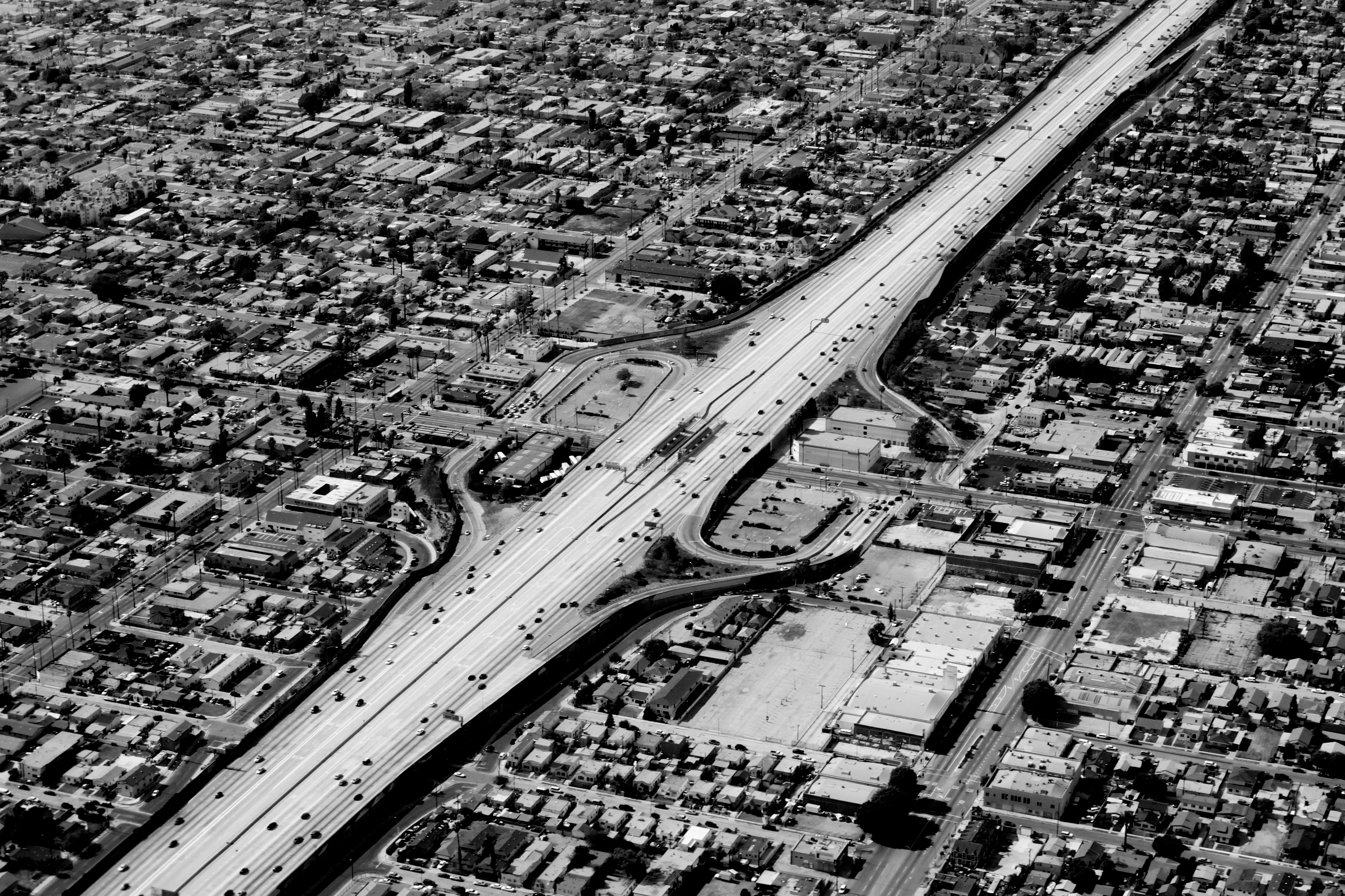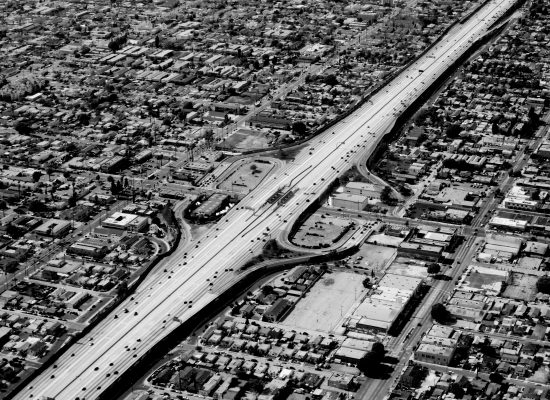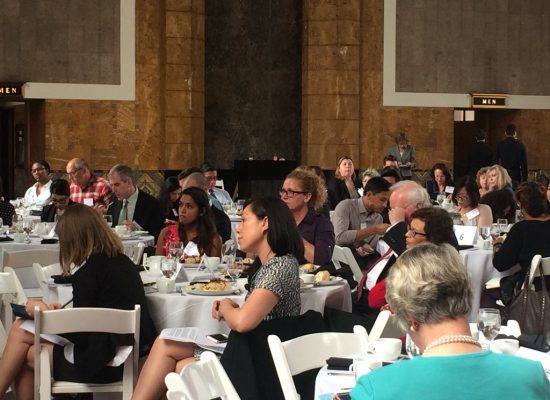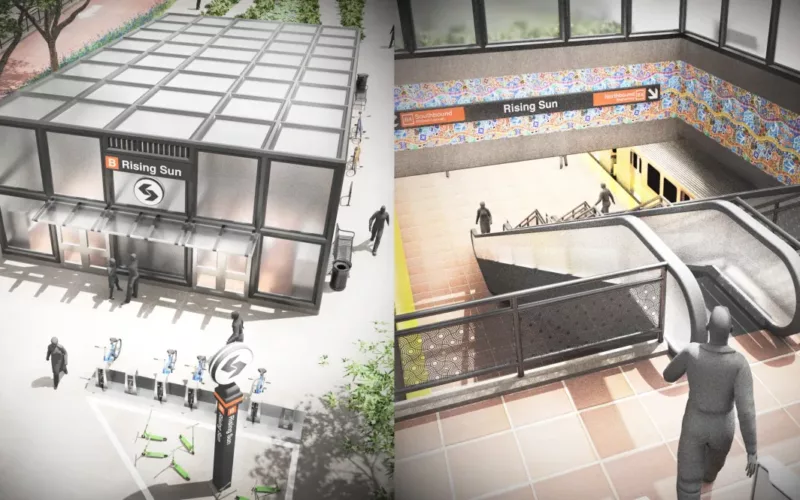

“Manchester/Harbor Transitway Station” by Oran Viriyincy is licensed under CC BY-SA 2.0.
Across the country, cities designed for cars are grappling with how to build high-quality transit and create urban forms that support it.
Nowhere does this problem attain a higher profile than in Los Angeles, which is embarking on the largest transit construction effort seen in any American city since the 1970s. Simply building transit is no guarantee that Angelenos will actually become less reliant on cars. Instead, a persistent campaign is needed—one that involves city and county governments, LA Metro, and a broad coalition of civic advocacy organizations, businesses, policy experts, and local institutions.
The importance of this sustained effort to guide the public conversation and policy outcomes is the central message of A People’s History of Recent Urban Transportation Innovation, TransitCenter’s study of the politics behind progress on public transit in six American cities.
In May, in partnership with LA Metro, Investing in Place, and MoveLA, TransitCenter brought a conversation about A People’s History to a packed hall at the historic Los Angeles Union Station. The event highlighted the most difficult transportation challenge currently facing Los Angeles: not the construction of a comprehensive transit system, but the long-term goal of creating a shared culture of transit use and reduced reliance on cars across the city’s diverse communities and landscapes.

Photo credit: Joelle Ballam-Schwan
Los Angeles is hardly alone in confronting this task. The event featured representatives from two other auto-centric cities with recent histories of successful investment in transit infrastructure—Houston and Salt Lake City—that are pioneers in the next era of transit expansion. Here are the most important takeaways:
Civic leaders can push the government to take risks
Therese McMillan, the former head of the Federal Transit Administration who is now LA Metro’s chief planning officer, emphasized that excessive fear of failure in government and public agencies stifles change.
Unfortunately, this fear is widespread in transportation agencies across the U.S. As The Connection recently noted, American transit agencies are often decades behind their foreign peers in adoption of new technologies and strategies. Open-gangway cars, which allow capacity expansion at basically no additional cost, are commonplace in other countries but virtually unknown here. Some commuter rail operators are ordering trains whose designs are two generations old. New York’s MTA, the largest transit agency in the country, relies on fare payment technology invented in the 1960s and signal technology that is even older.
Civic organizations have a dual responsibility when it comes to public-sector innovation: to hold government agencies accountable and detail their shortcomings in situations where change is clearly needed, and to support them when they pursue genuine improvements. Sometimes, civic activism is so effective that it becomes official policy. In Houston, Christof Spieler began blogging about the deficiencies he saw in the city’s current bus network. His activism led Mayor Annise Parker (who spoke at the Los Angeles event) to offer him a seat on board of the transit agency. Just a few years later, the agency boasts a redesigned bus network that has won it, Parker, and Spieler national acclaim.
Good transit plans are built around community values
Houston, Los Angeles, and Salt Lake City share a common pattern of sprawling development. But transit networks must be developed to suit the environments and political cultures in which they exist; no one solution works everywhere.
In Utah, Robert Grow and Envision Utah’s efforts as civic leaders on transit underscore the need to tailor transit plans—and the messaging that accompanies those plans—to fit the values of the community being served. For Utahns, this meant placing light rail, commuter rail, and development plans in the context of “conservative communalism”—a cultural attitude influenced by the geography of the Wasatch Front and by the LDS Church.
Given the large number of Utah residents who have lived overseas as LDS missionaries, Grow was able to highlight the benefits that high-quality transit has brought to cities in South America and East Asia without the examples falling on deaf ears. The importance of ensuring a variety of housing was framed as a way to ensure multiple generations of families could afford to live near each other. Finally, the unusually visible nature of sprawl on the Wasatch Front—where buildable land is hemmed in by lakes and mountains—played to Envision Utah’s advantage when discussing the need for smart-growth policies.
As Envision Utah grew, Grow also emphasized the need to invite into the planning process as many different kinds of community leaders as possible. This group included mining and energy industry representatives, suburban elected officials, and clergy from the LDS Church, which ended up contributing $700,000 to an environmental impact study. The church is also a major landowner in downtown Salt Lake City, and helped ensure the success of the transit agency’s investments by developing new transit-oriented projects like City Creek Center.
Grow’s outreach paid off as many of the lesser-known stakeholders in Envision Utah took on more influential roles over time. The best example: Gary Herbert, who became involved in the late 1990s as a member of a suburban county commission and was elected Utah’s governor in 2008.
We need leaders with diverse backgrounds and fresh perspectives
Notably, neither Grow nor Spieler is trained in transit planning—Grow is a lawyer and entrepreneur, while Spieler is an architect.
The fact that both men came from outside the fold of the transportation industry was perhaps exactly why their perspectives became so necessary to the planning processes in their respective cities. Spieler and his fellow board members, along with agency staff and outside consultants, began the redesign process by considering what the city’s transit network would look like if they started from a blank slate. Without Mayor Parker’s commitment to empowering people with non-traditional backgrounds in transit planning, Houston may never have embarked on its redesign plan. Similarly, Envision Utah found success not by debating a particular project or technology, but rather by asking citizens what kind of region they wanted to see in the future.
Los Angeles is the largest and most diverse city of the three. But as the city’s voters prepare to render a verdict on the next generation of transit projects this November, ensuring a positive trajectory for transit in the Southland will require linking a vision for transit to broader goals for the city through public engagement and non-traditional leadership.
Julia Ehrman is a program analyst in TransitCenter’s leadership and governance program.
 On the Brink: Will WMATA’s Progress Be Erased by 2024?
On the Brink: Will WMATA’s Progress Be Erased by 2024?
The experience of being a WMATA rider has substantially improved over the last 18 months, thanks to changes the agency has made like adding off-peak service and simplifying fares. Things are about to get even better with the launch of all-door boarding later this fall, overnight bus service on some lines starting in December, and an ambitious plan to redesign the Metrobus network. But all of this could go away by July 1, 2024.
Read More To Achieve Justice and Climate Outcomes, Fund These Transit Capital Projects
To Achieve Justice and Climate Outcomes, Fund These Transit Capital Projects
Transit advocates, organizers, and riders are calling on local and state agencies along with the USDOT to advance projects designed to improve the mobility of Black and Brown individuals at a time when there is unprecedented funding and an equitable framework to transform transportation infrastructure, support the climate, and right historic injustices.
Read More